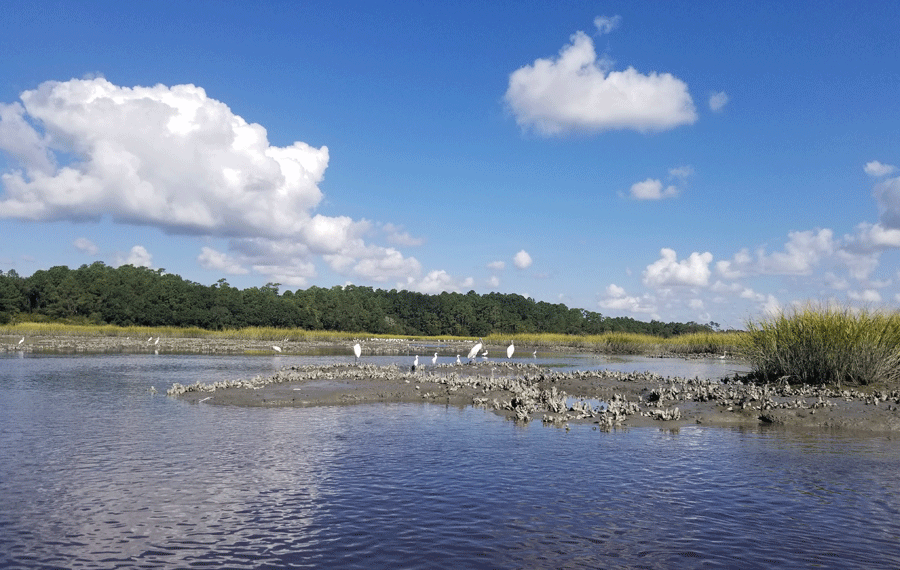The Effects of Natural Disasters on Recreation Tourism Along the Grand Strand

Before Myrtle Beach Was Myrtle Beach
The Grand Strand has been a popular vacation destination for travelers across the world since the 1930’s. It’s hard to imagine, but before that time, most of the Myrtle Beach area that we know today was uninhabitable because of how difficult it was to get here. There were none of the things Myrtle Beach is known for today like high rises towering over the ocean, amusement rides with neon lights, or seafood restaurants serving fresh hush puppies around every corner. In fact, to encourage growth and development, beachfront lots were being sold for as little as $25, and you were awarded an extra lot if you built a house that was at least $500 in value.
Today, that is certainly not the case. Times have changed and so have the price of beachfront properties. Beachfront properties along the Grand Strand are considered to be prime real estate, and in turn, come with a high price tag attached. The once desolate, out the way, swamp that was Myrtle Beach and exploded into a thriving, tourism dependent vacation destination. Without tourism, the Grand Strand may cease to exist, and the greatest threat to the tourism industry are natural disasters such as hurricanes. A hurricane can cripple tourism for months, which greatly impacts small businesses in the area.
Why Is Our Area So Vulnerable to Hurricanes?
Not only has the value of properties skyrocketed in our area over the last 70 years, the cost to protect them has as well. Homeowners along the coast who live in what is called a “Flood Zone” are obligated to pay for Flood Insurance to protect their investment and life valuables from natural flooding disasters. The Flood Zone has changed over time. Flood Insurance is mandatory for homes located on the East side of Highway 17, however homes situated to the West of 17 may not be. It is dependent on what scientists have determined are areas highly vulnerable to flooding in the event of torrential rain, tropical storms, and hurricanes.
Unfortunately, while the Grand Strand is a beautiful paradise to live and visit, it does have its flaws just like anywhere else. The flaw in this case is elevation. The majority of the Grand Strand is at or just a few feet above sea level, and much of our area is surrounded by major freshwater rivers like the Waccamaw and Great Pee. The combination of storm surge from the ocean and freshwater river level rise, make our area extremely vulnerable to flooding events. Major catastrophic hurricanes to hit our coast that you may remember experiencing or heard about over the decades include:
Hazel October 1954
Hugo September 1989
Floyd September 1999
Charley August 2004
Matthew October 2016
Florence September 2018
Keep in mind that these are just the major hurricanes to hit the Grand Strand. This doesn’t include systems that arrived in the tropical storm or tropical depression stage. Not to mention major flooding events like the 1000 year flood we experienced in 2015! Every hurricane is different. It’s structure, wind speeds, amount of rain it brings with it, where it makes landfall, and how long it lingers once it arrives. With that being said, the effects the hurricane has on each town and community along the coast can vary as well. Hurricanes cause damage both through wind and rain, but sometimes one effect is greater than the other. Some hurricanes are remembered for their destruction from high wind speeds, toppling hundreds of trees and tearing roofs off of some the most well-constructed homes. Others dump torrential rain that makes you think maybe Noah did have a good idea when he built that Ark.
Hurricane Florence Makes Its Mark: A Major Historical Flood Event Arises
This month, the Grand Strand, as well as many coastal, and even inland communities across North Carolina and South Carolina, had the misfortune of meeting Hurricane Florence. Or for short, Flo, as some haven begun to call her. Flo was expected to make landfall somewhere along the Carolina’s as a very strong Category 4 hurricane. We thought we were spared when news broke of Flo weakening, protecting our area from extreme wind damage. We had no idea what were actually in for. Time and time again, our trusted local Chief Meteorologist Ed Piotrowski warned us not to let our guards down. Emphasizing that, we can hide from wind but can’t hide from water. Weather modeling showed that Flo would linger over our coast, dumping tons of rain on our beautiful paradise before continuing inland. Widespread panic ensued for many but even then, many of us beach folks thought, we are tough and have been through hurricanes before. We didn’t think this one would be any different. Until it was.
Current Conditions: Is it Safe to Paddle?
Today, over three weeks since Florence made landfall, many homes along the Waccamaw and Pee Dee Rivers are still submerged mostly or partly underwater. Many people have suffered some damages to their homes and businesses, and many have lost everything. It is heartbreaking to see the amount devastation and destruction that this monster Hurricane has caused.
Many water routes along the Waccamaw and Pee Dee Rivers are currently closed to boat traffic due to the bacteria levels in the water, and the amount of large debris quickly flowing down river. It may be months before our freshwater rivers are restored back to their normal condition, which is why we are unable to offer our Cypress Swamp tours to guests at this time. We, as well as many other tourism dependent businesses in our area, are greatly affected when we lose access to our freshwater rivers. Recreation tourism depends on Grand Strand visitors to sustain and grow our businesses. Natural disasters are one of the biggest threats to our economy, and in turn, the livelihood of the people who live here.
Despite the loss and devastation that is still occurring in these inland areas and communities along our fresh water rivers, the beach remains unscathed. We are happy to say that the Murrells Inlet Salt Marsh and surrounding beaches have returned to normal conditions, and we are offering both 2-Hour and 4-Hour Salt Marsh Tours in Murrells Inlet. Once the fresh water rivers recede, and the water is deemed safe for recreation, we will reopen our Cypress Swamp Tours.
We are very fortunate that our pristine, white sandy beaches have been spared. That is after all why most travelers come here; to go to the beach! The beach is where you can pitch an umbrella, drop your towel and chairs in the sand, and bask in the warm sunshine ‘till you turn a golden hue. Then take a dip and cool off in the salty sea, build a sand castle with your kids, or take a Guided Kayak EcoTour of Kayak Fishing Trip with Black River Outdoors!
Guided Kayak EcoTours in Murrells Inlet
On our Salt Marsh Tour, you will have the opportunity to paddle though the pristine channels and creeks that flow through Huntington Beach State Park. The wildlife this time of the year is becoming more active as the weather begins to gradually cool down. We are still experiencing highs in the 80s during the day and lows in the low 70s at night. On our Salt Marsh tours can expect to see a wide variety of wading birds, shore birds, and maybe even a bird of prey, including Great Blue Herons, Wood Storks, Great Egrets, Roseate Spoonbills, Osprey, Bald Eagles, American Oyster Catchers, Sandpipers, Skimmers, and more! In addition to our feathery friends, you may spot a bottle-nosed dolphin, different kinds of Rays, schools of fish splashing all around, Fiddler and Blue Crabs. The Salt Marsh is full of amazing sea creatures!
If you are looking for a fun and relaxing weekend getaway, head down to Murrells Inlet and take a paddle with us! We are open year round, 7 days a week.



